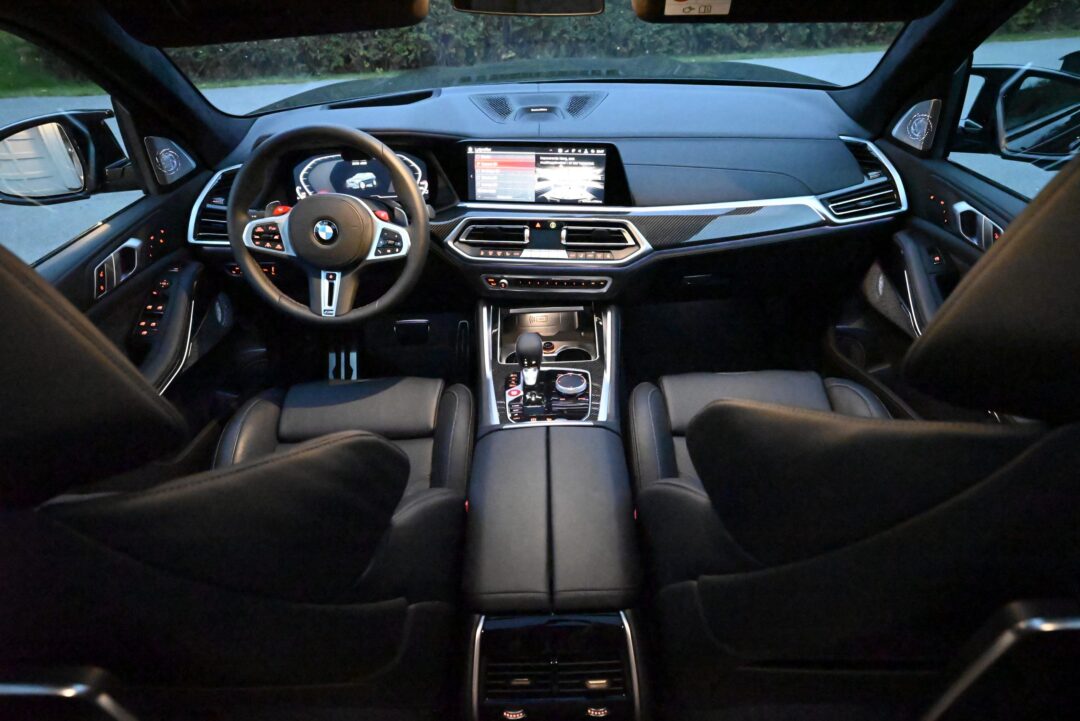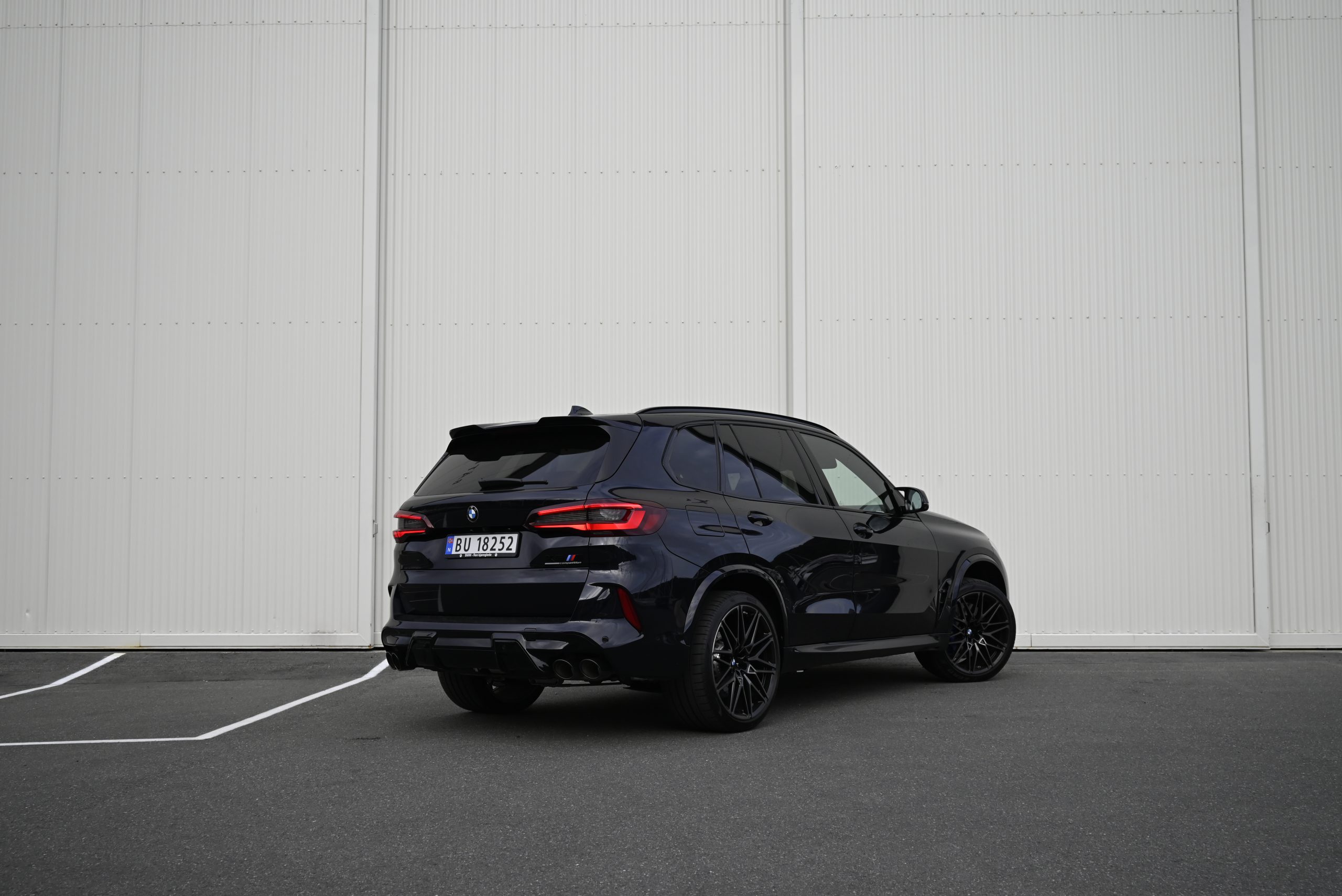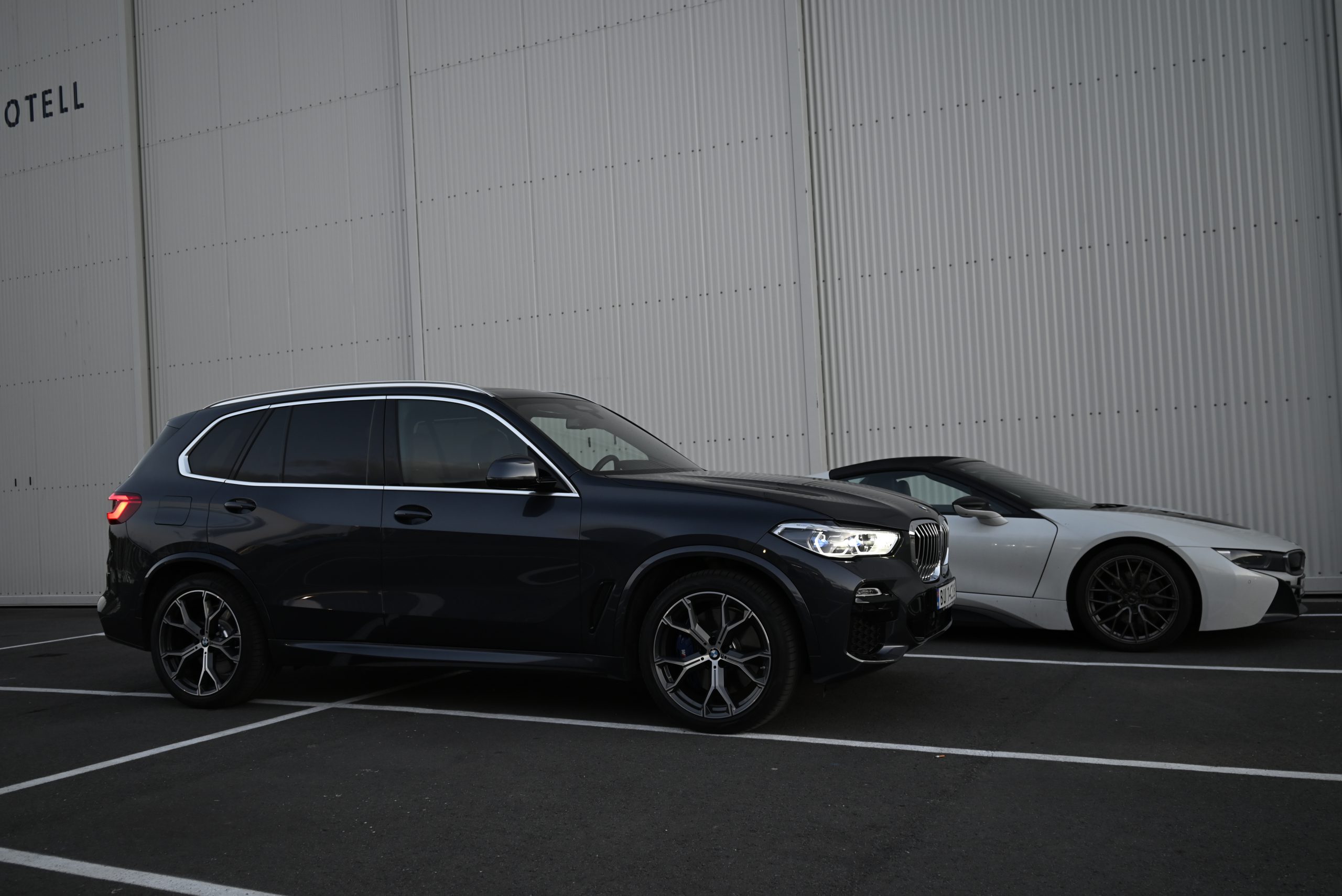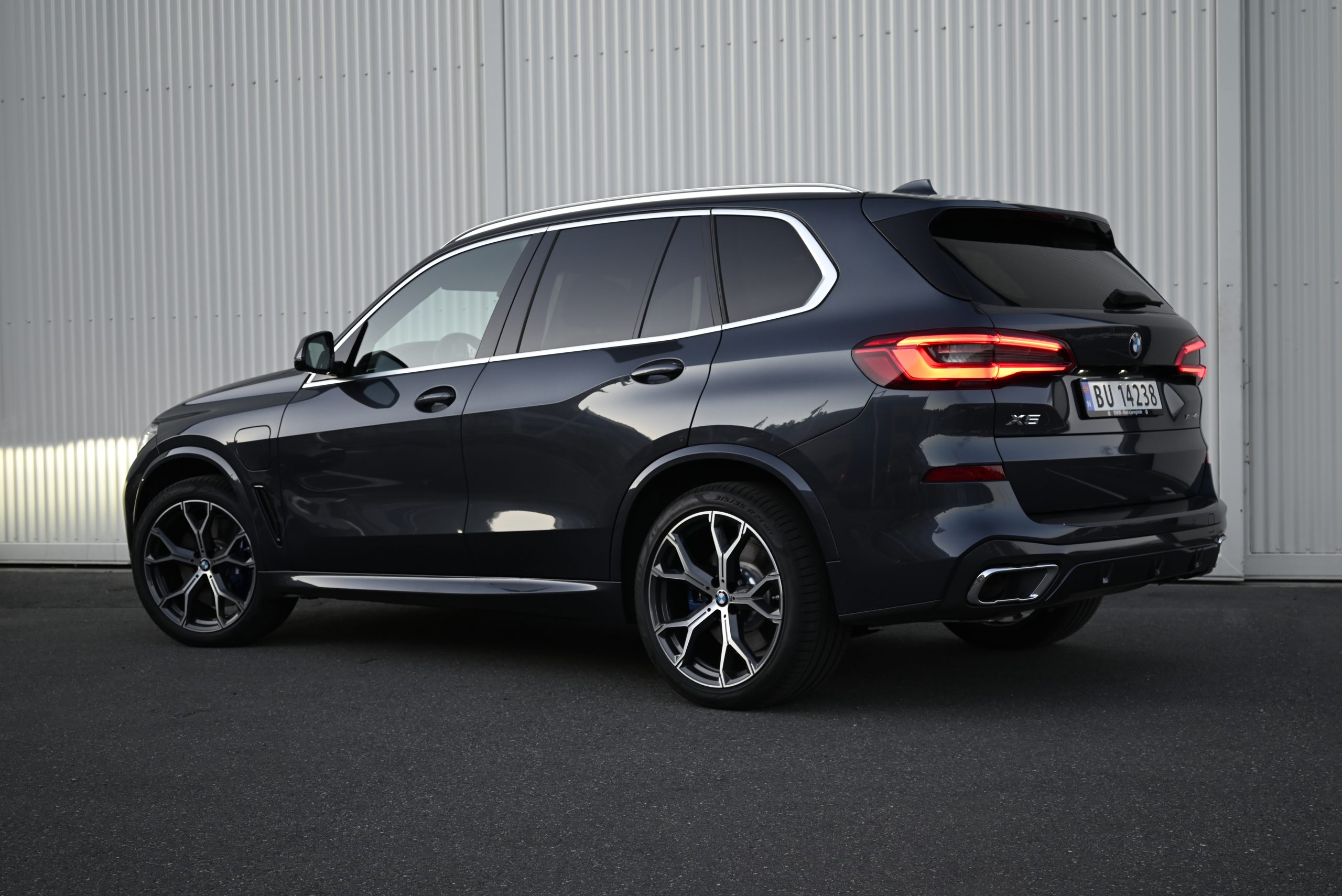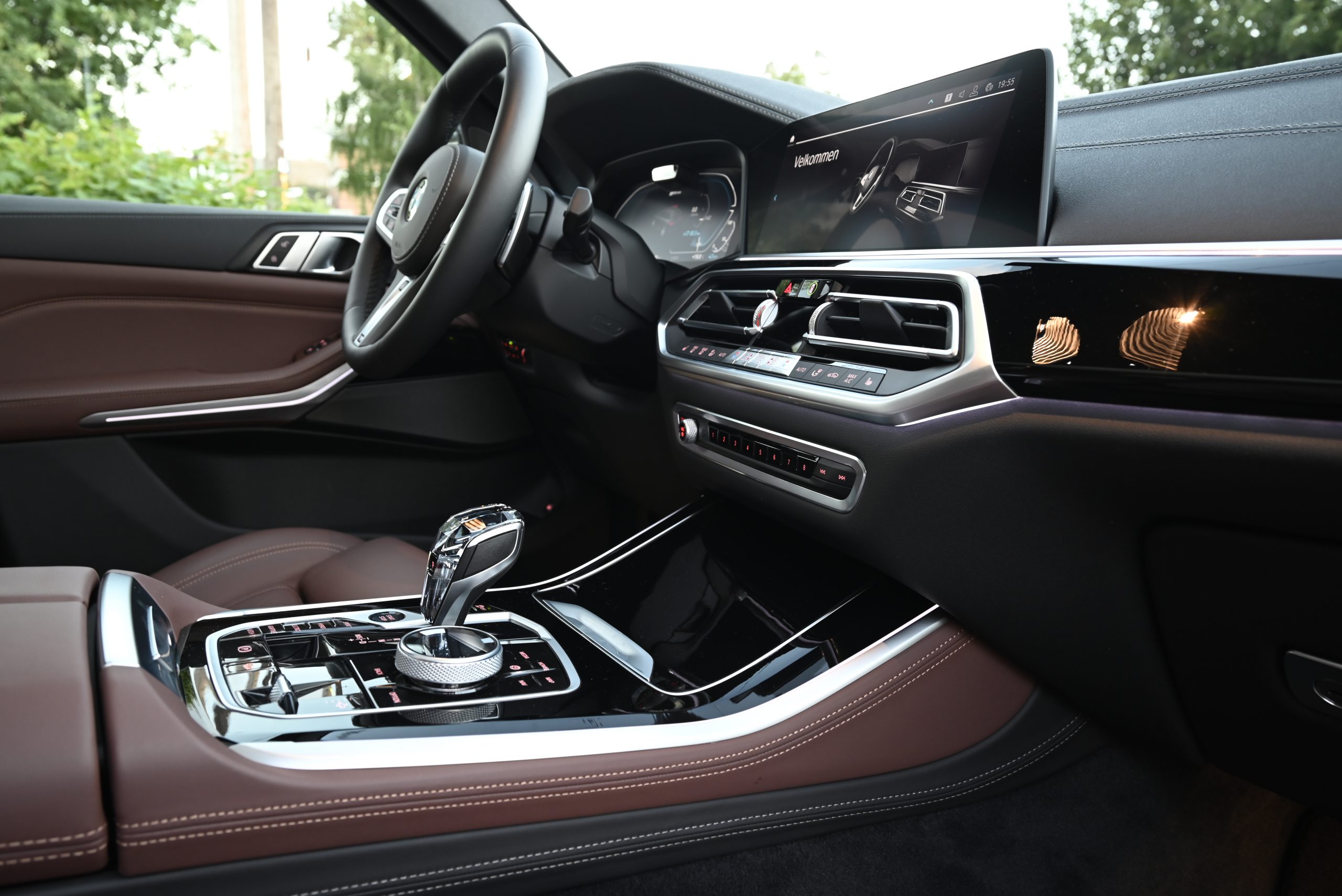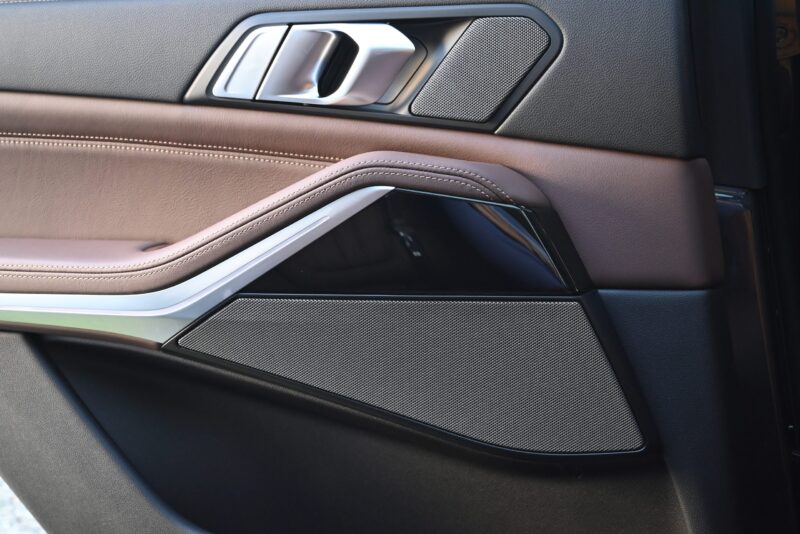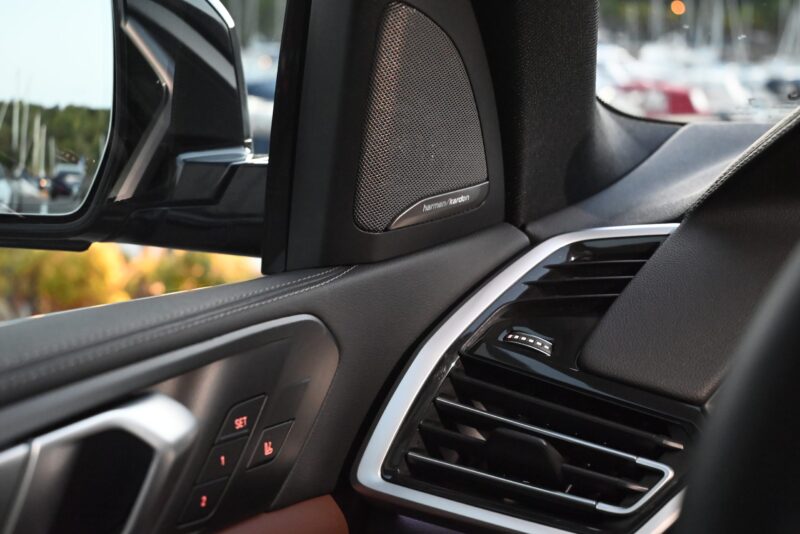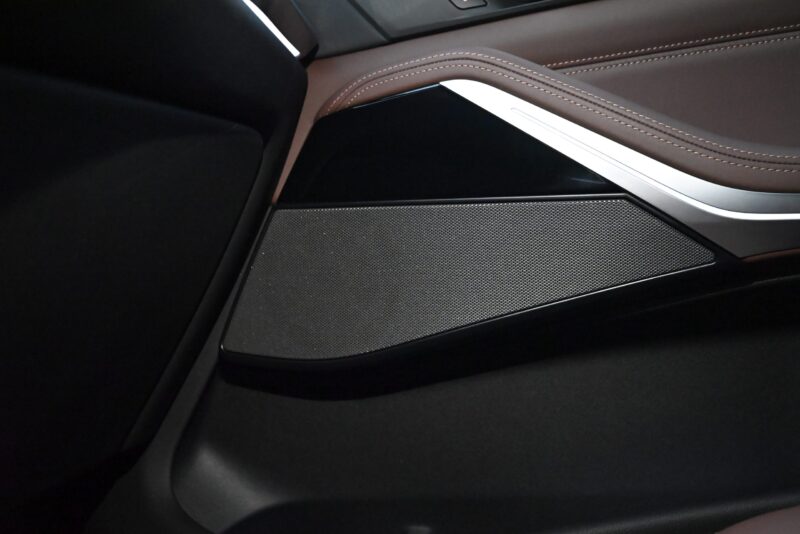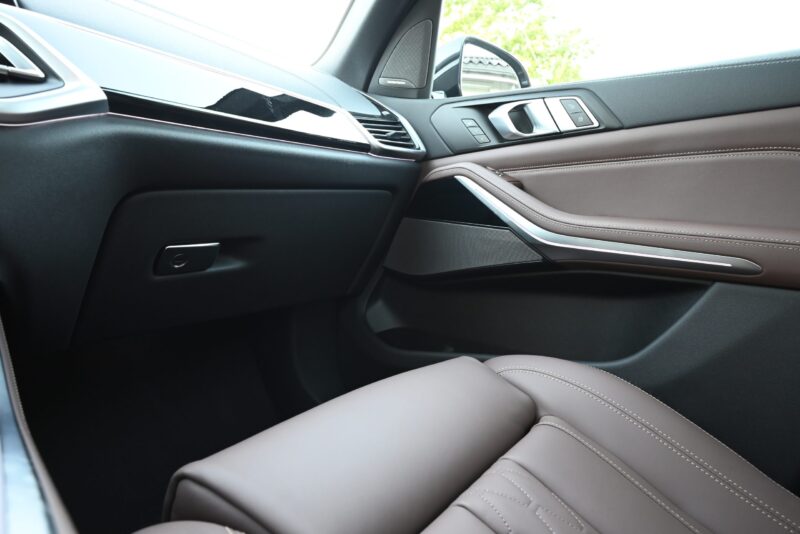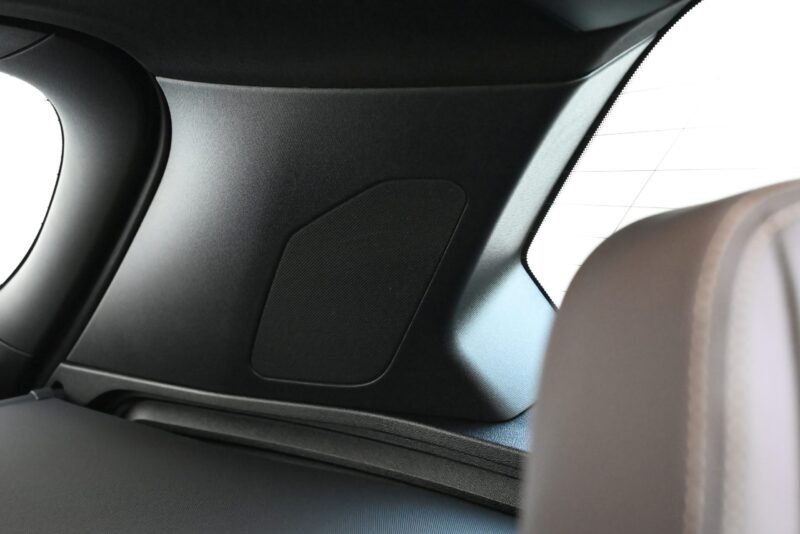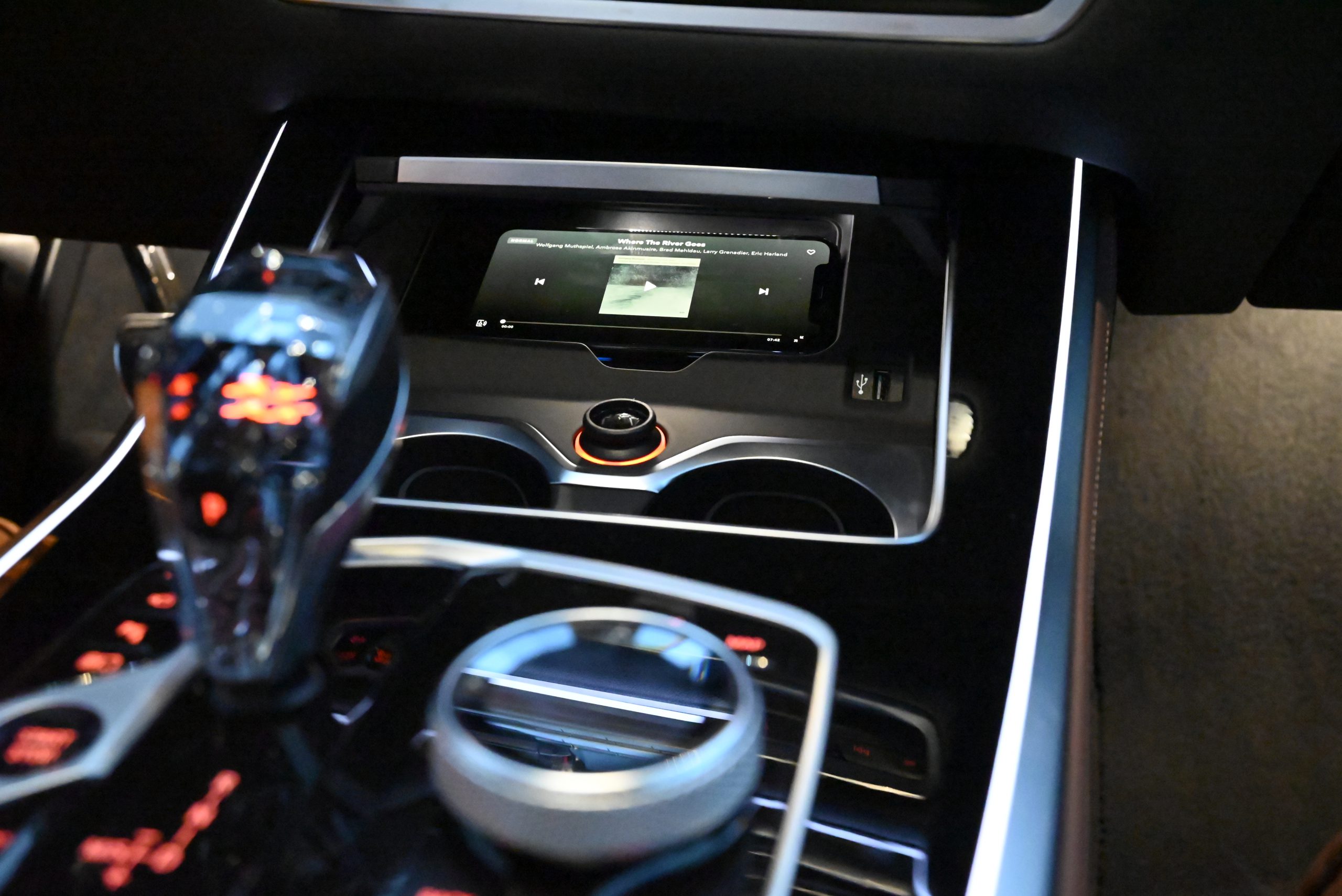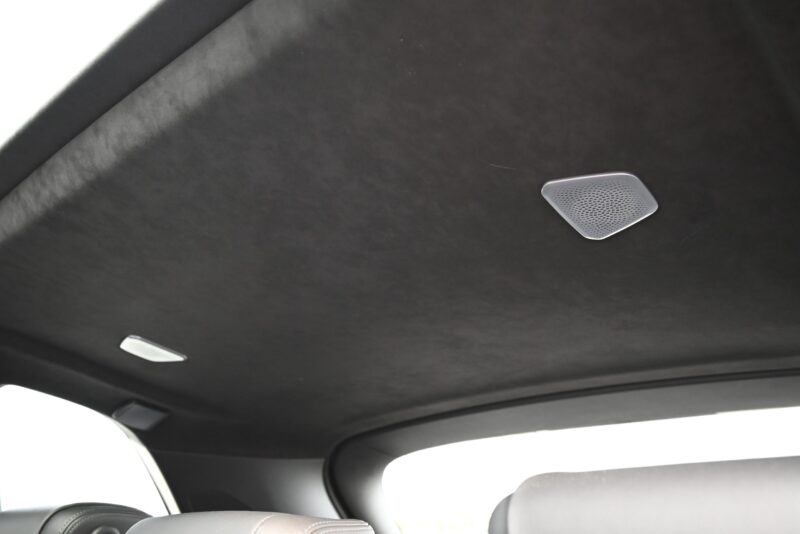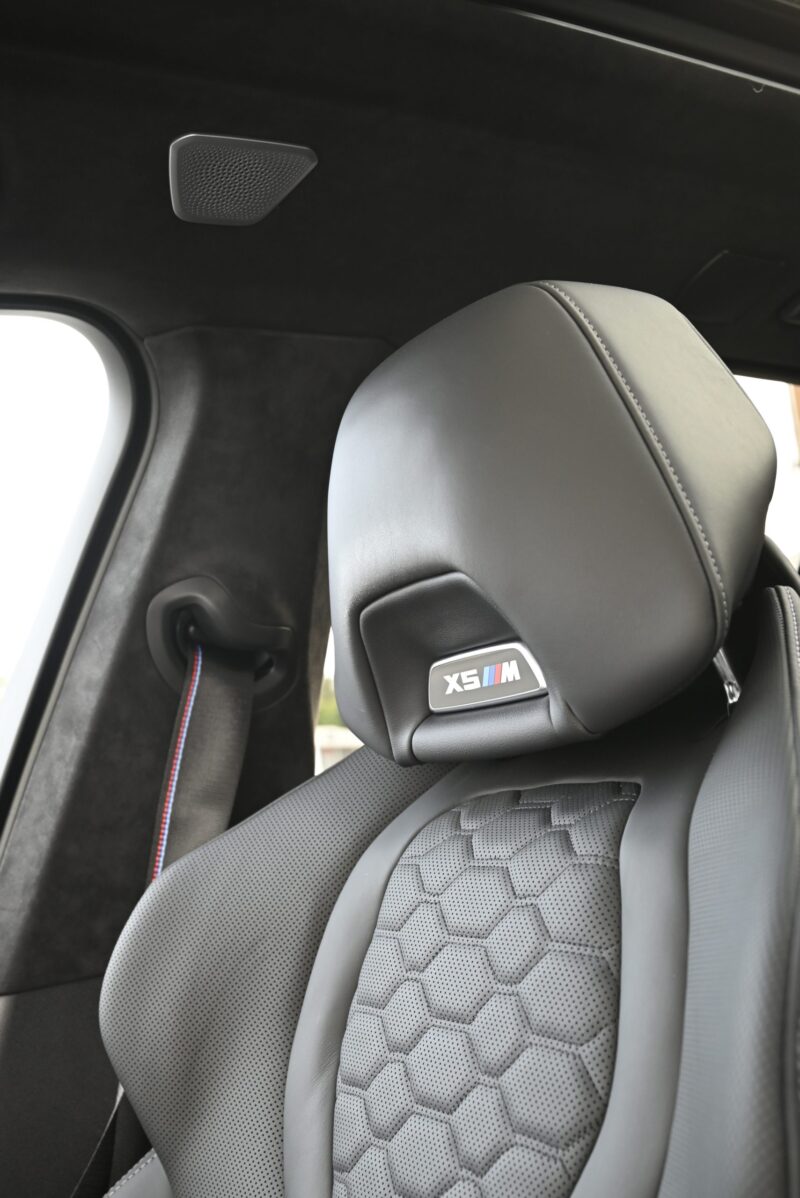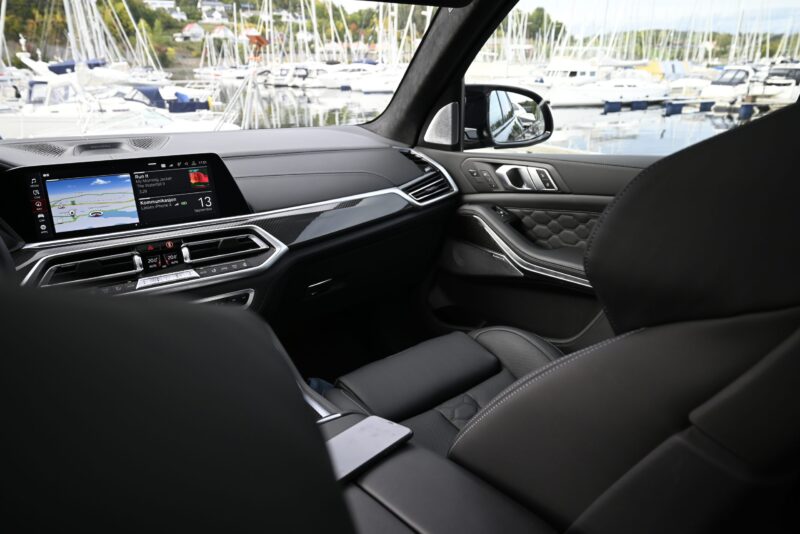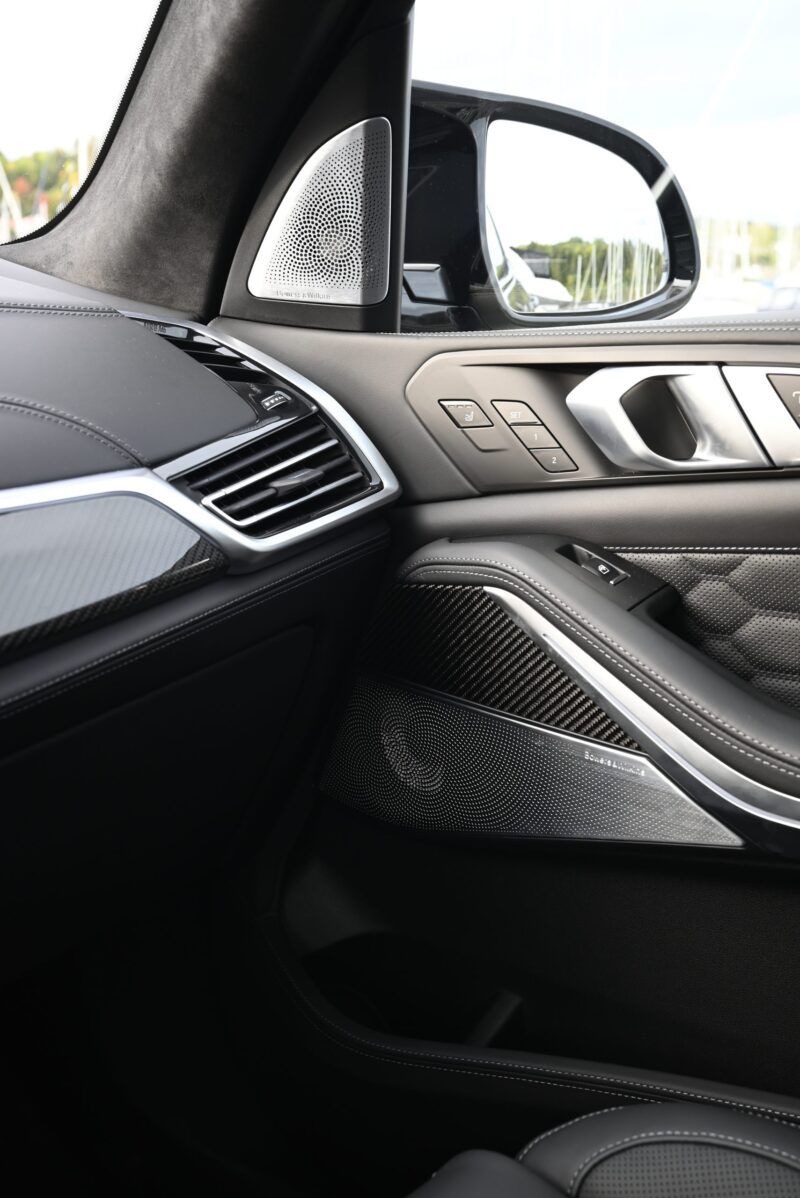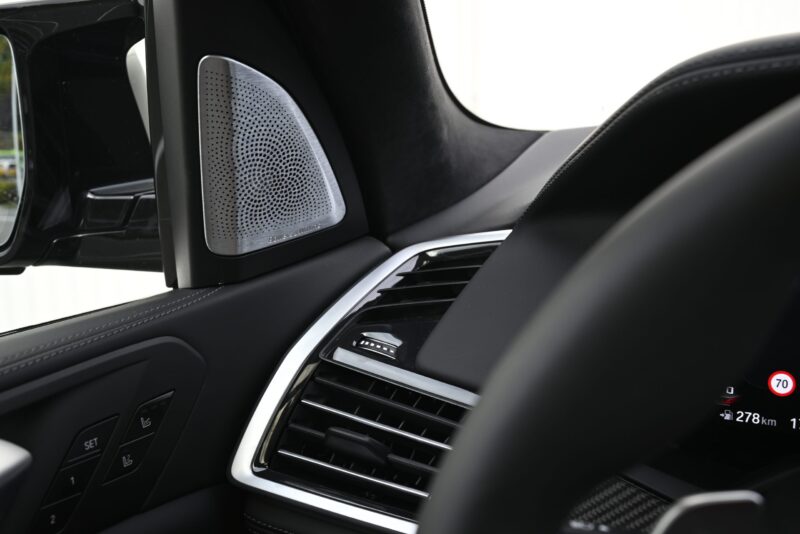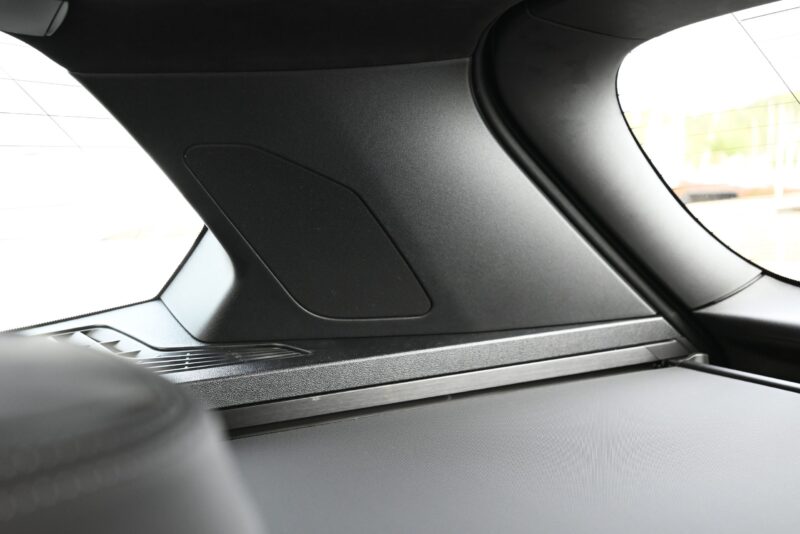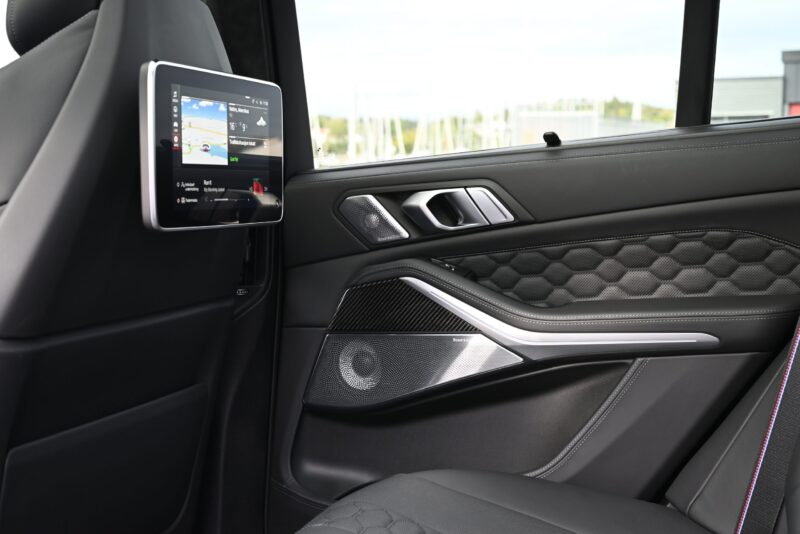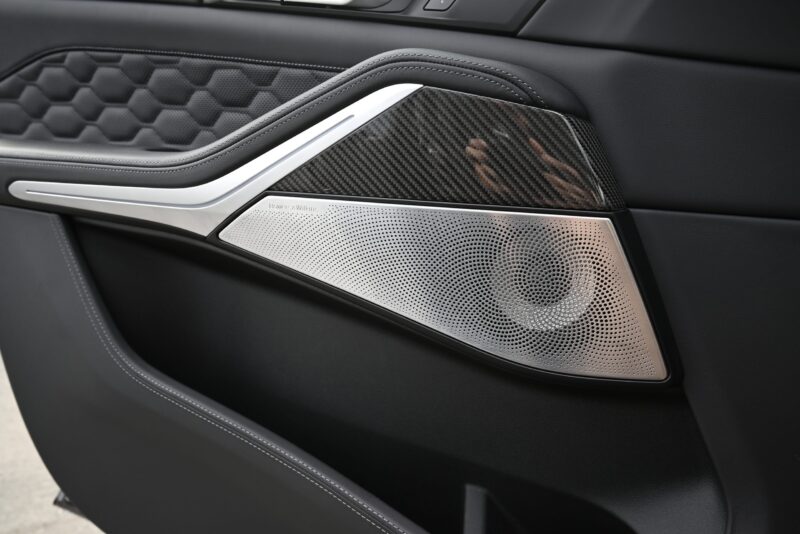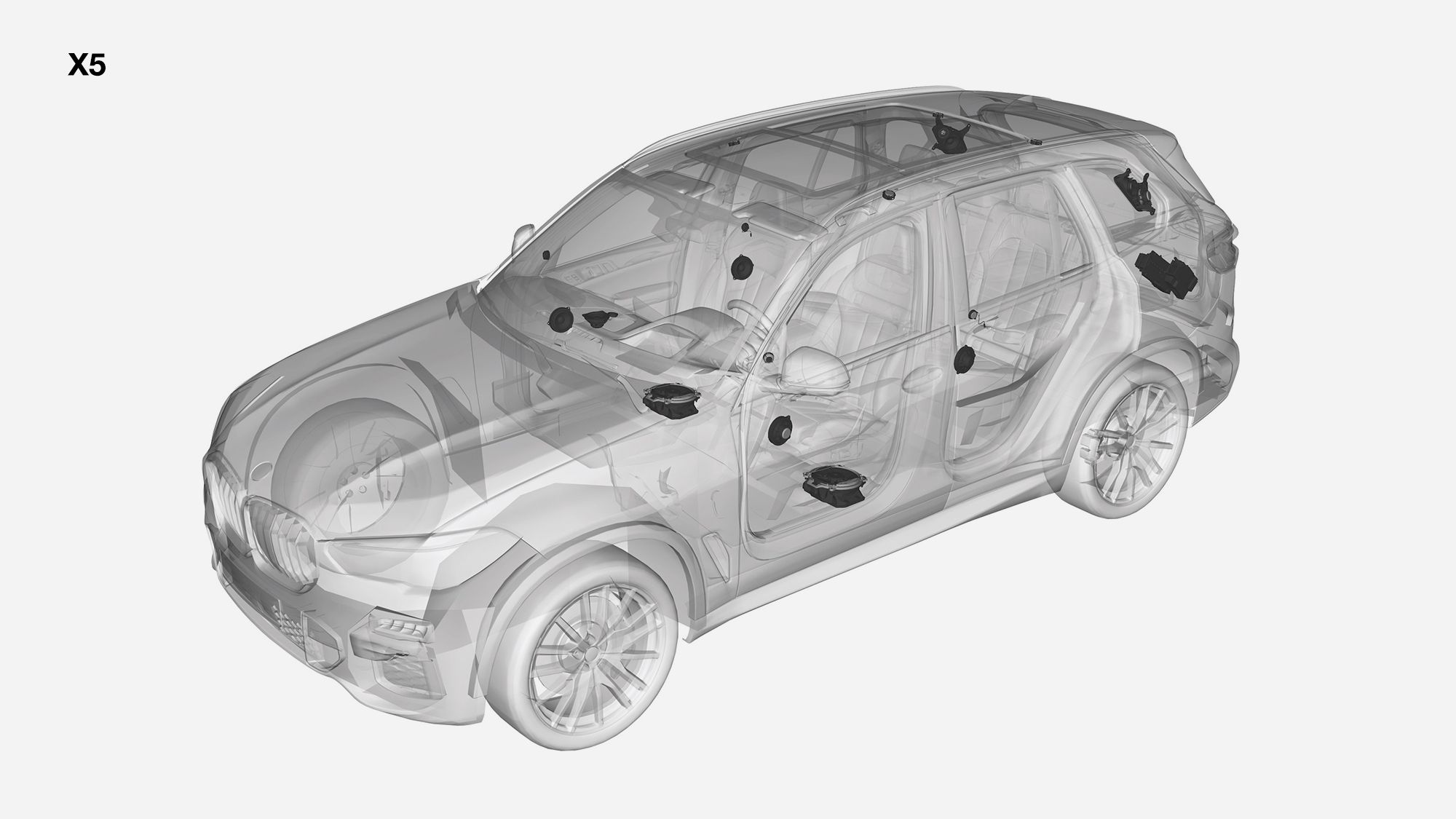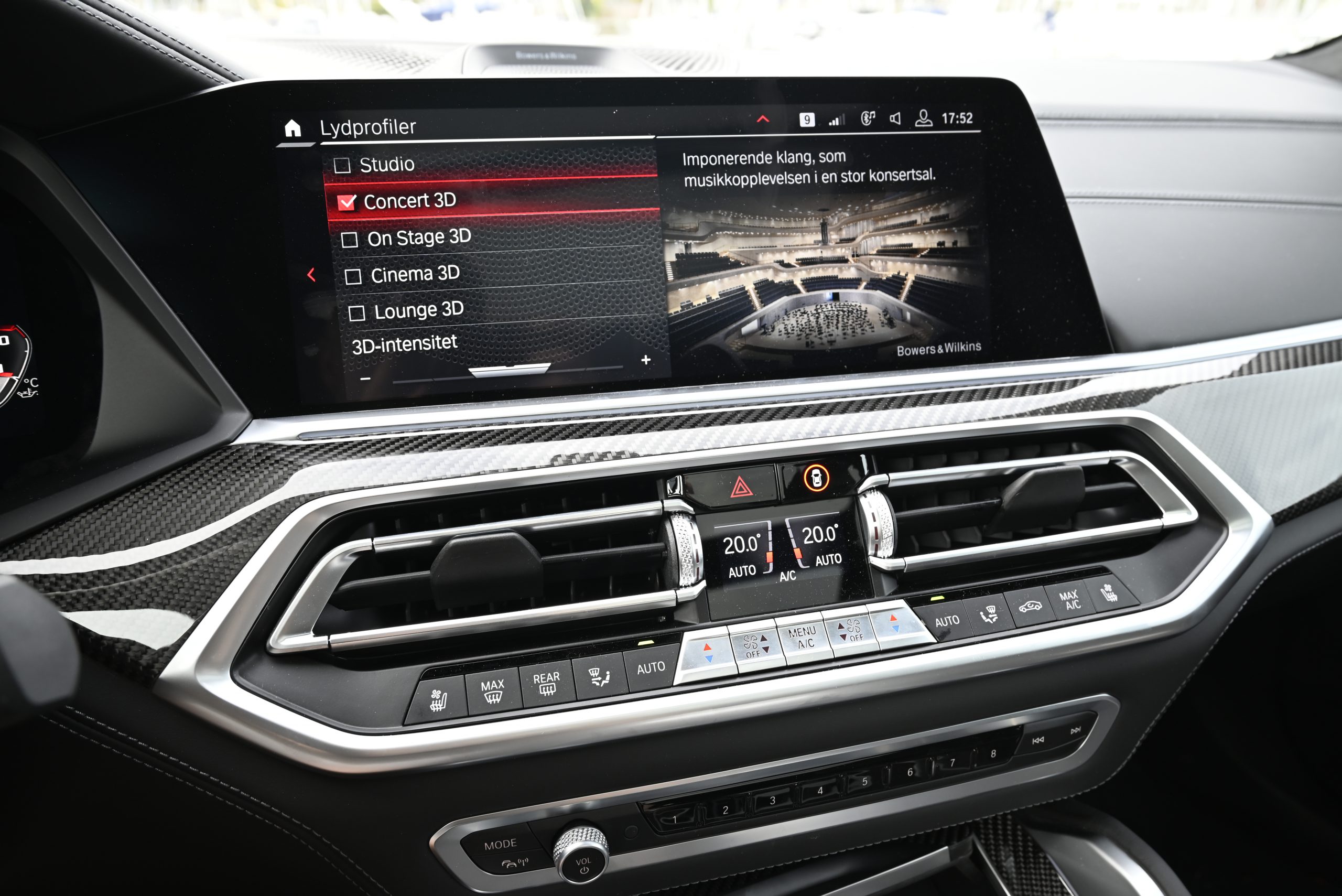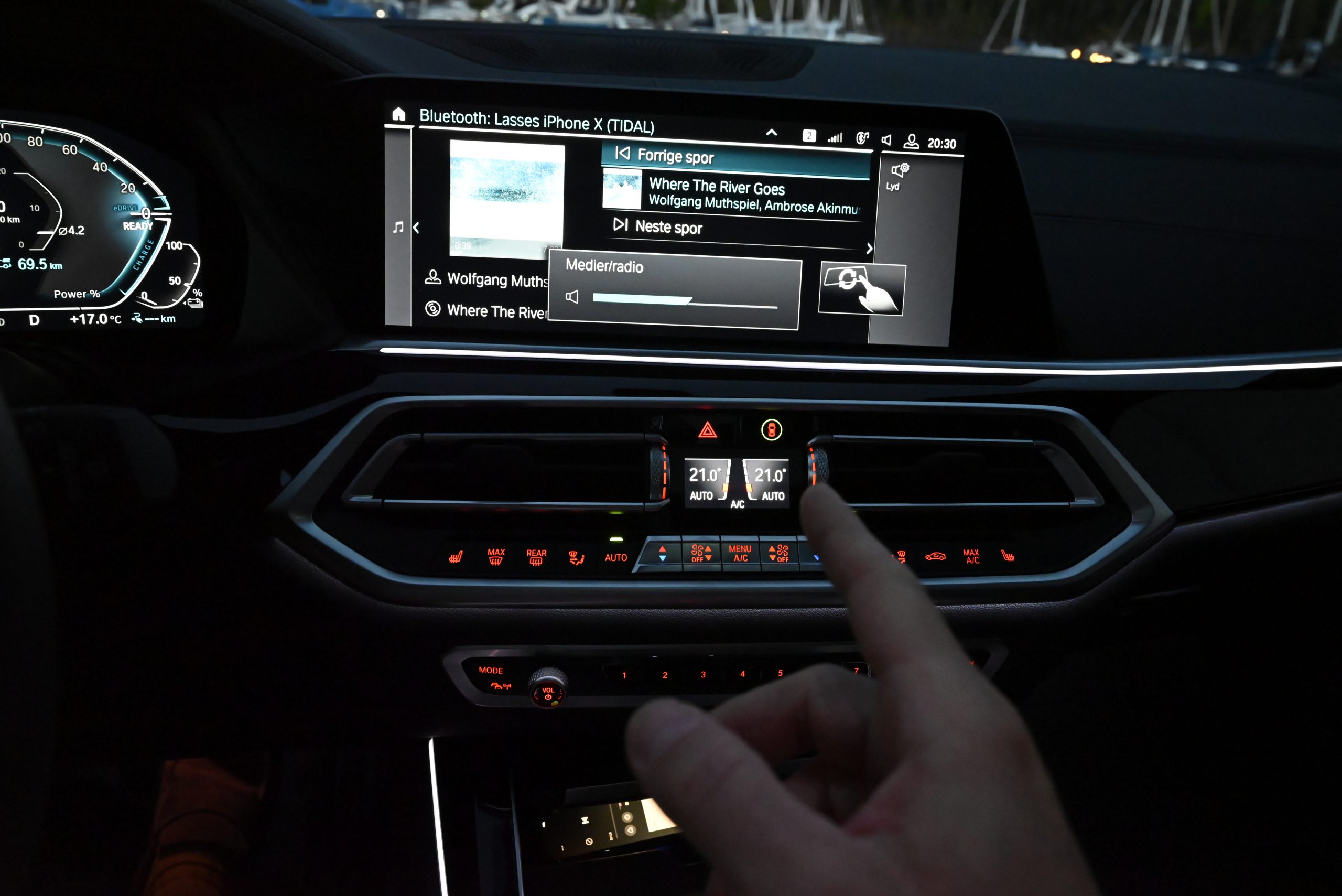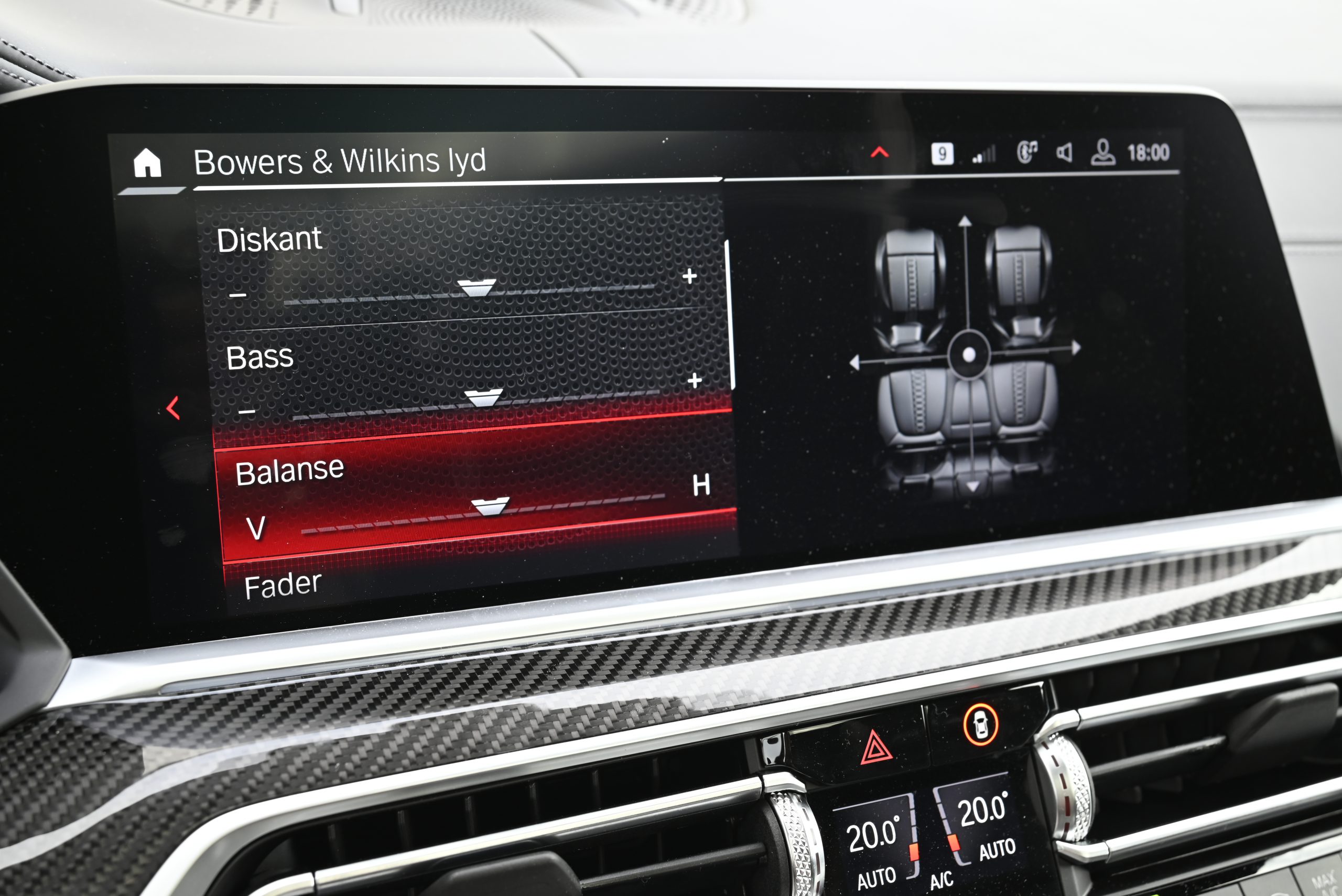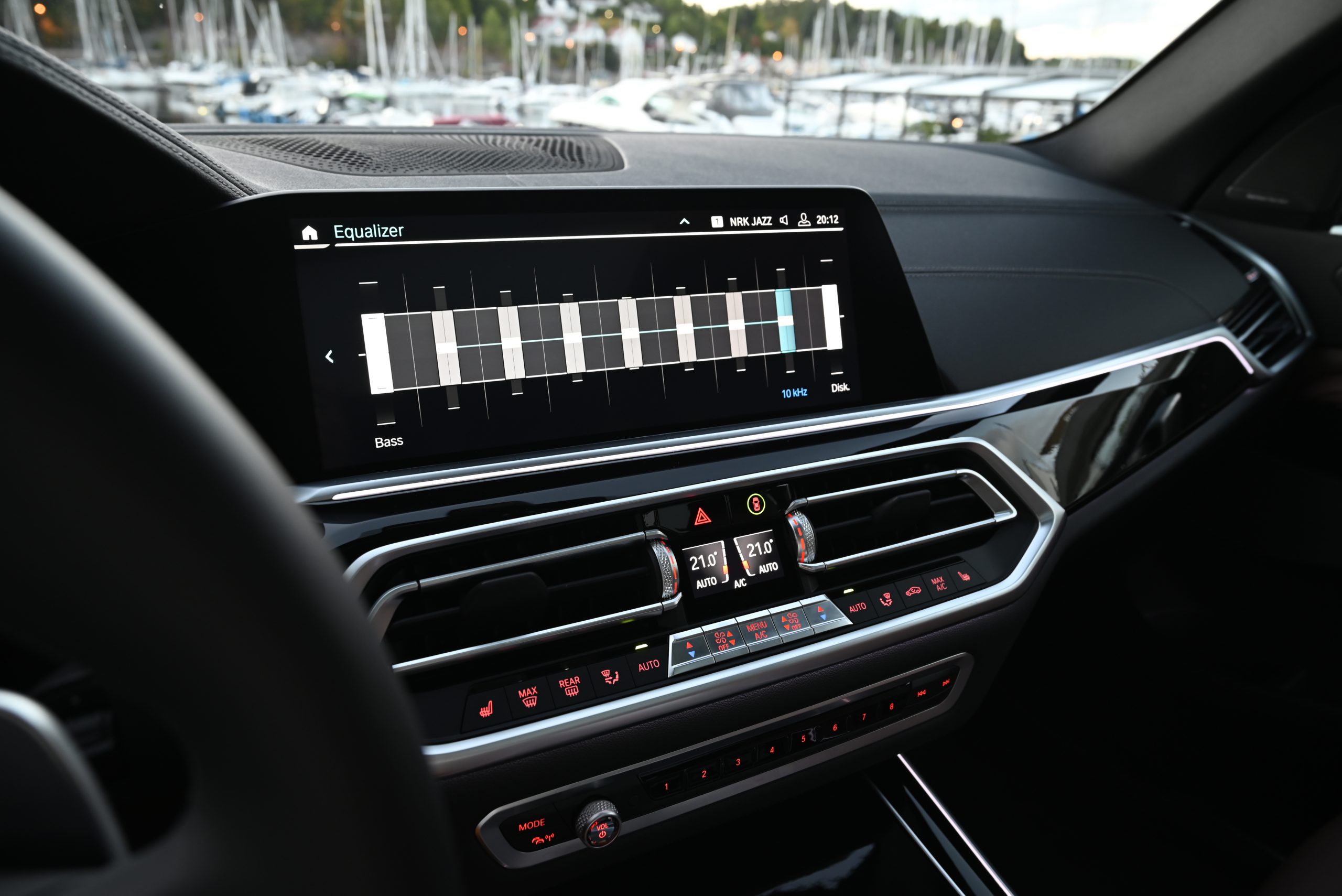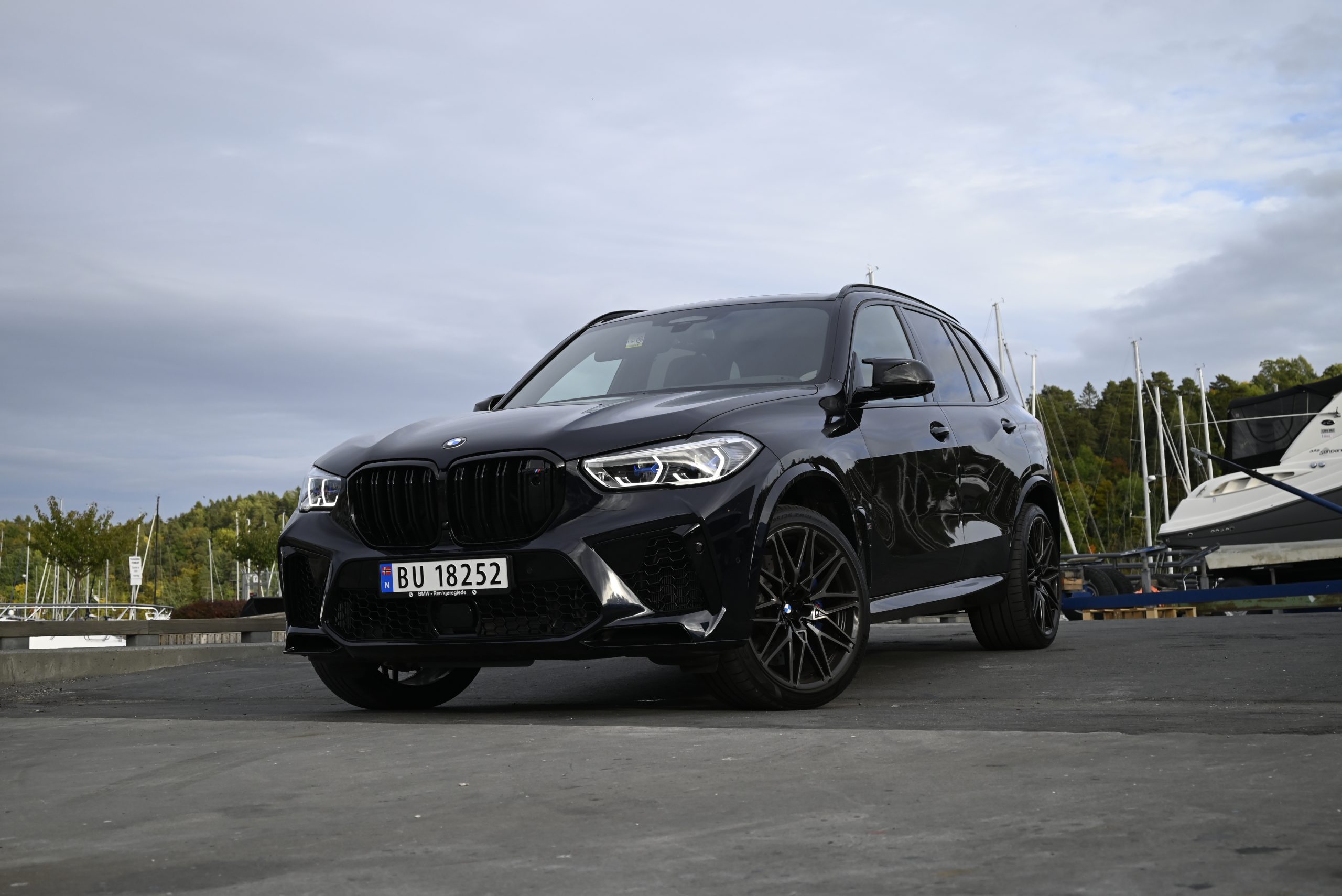The feeling of the apocalypse is intrusive when the roar of the turbocharged V8 mixes with the Valkyrie ride, which flows out of the system on the ugly grass BMW. With the red M2 button activated and a little fiddling with the equalizer, the hair on the body straightens as the speed increases.
And it does it fast. One hundred in 3.8 seconds is insane on an electric car, beyond on a 2.3 tonne SUV like this. Which is among the fastest SUVs in the market.
It all does not stop until the needle pushes 300 km / h! But we are not sitting in the BMW X5 M Competition to test how fast it goes, but to find out if it is worth paying more to replace the Harman Kardon with Bowers & Wilkins, to get better sound in the car.
English B&W offers tailor-made sound systems for several car manufacturers, and you can choose B&W sound in both Maserati and McLaren, also in Volvo which we have tested before, and in several BMW models.
Currently only in BMWs with fuel engine, or hybrids, but it is only a matter of crossing your fingers that it will be possible to choose B&W also in the upcoming electric cars. The sound is so good that many people want sound from B&W in a quiet BMW.
The usual thing if you turn to BMW to buy a new or used car, is a fairly standard, with not at all bad system with up to 10 speakers, around 200 w amplifier power with subwoofer hidden under the seats. The number of speakers and the effect vary between the models, so does it if you check for sound from Harman Kardon.
Which does not cost a fortune. Then you get much better sound no matter which BMW model you are interested in. Harman Kardon is offered for all BMW models, including the electric car i3, and all hybrid models, such as the X5 xDrive45e. As we tested the Harman Kardon plant in.
Harman Kardon Surround Sound System
In an X5, the system from Harman Kardon is built with more speakers than in the electric i3, and there are more powerful amplifiers with a total of 464 watts of power here, which power 16 speakers spread over nine channels in an X5.
In comparison, there are 12 speakers and a total of 360 w power, in the Harman Kardon system in an i3.
In our test car, the Harman Kardon system was priced at 1050 pounds less than the cost of towing hitch or winter tires, and an obvious choice in any BMW in our opinion.
If you choose H / K, the speakers are distributed around the cabin, with 26 mm tweeter elements placed in pairs in front of the a-pillars, at the top of the door sides in the rear seats, and on top of the c-pillars at the rear. An extra tweeter element sits together with a 10 cm midrange element in the middle of the dashboard at the top, and the other midrange tones are located in the door sides front and rear, as well as in the c-pillars at the rear.
Two 21.7 cm large subwoofers are mounted under each of the front seats, and it is all powered by a DSP-controlled amplifier with a total of 464 w power.
You can choose to use the system in stereo, or with Logic 7 surround, which can play both 5.1 sound and stereo recording in surround, and it works great on most music.
The Harman system also has a nine-band equalizer that can be used if you want a different audio signature, and the bass freak can frolic with three frequencies in the bass that can make it vibrate violently in the seats when you turn up the volume.
Bowers & Wilkins Diamond Surround Sound System
It definitely does, too, if you have chosen the B&W system, which has four extra speakers in the ceiling, for an extended surround effect. While the four 40mm elements are located above the front seats and rear seat, the other B&W speakers are located exactly where the Harman speakers are in the X5 xDrive45e, but the B&W speakers in the X5 M Competition are far more lavish.
If we start at the front, we find two 25 mm treble elements with diaphragms in artificially made diamond material, as we know from B & W’s 800 series with hgh-end speakers. They have extremely low self-resonance and color the sound marginally even when playing loud. The diamond tweeters have a rear chamber that dampens resonances from the diaphragms, a technology taken from B & W’s Nautilus series.
The other tweets use aluminum diaphragms, and are located in the center of the dashboard, at the top of the door sides at the rear, and on the c-pillars at the rear. Seven 10 cm midrange elements are placed in the door sides, on the c-pillars and one of them sits next to one of the treble elements on top of the dashboard.
The seven midrange elements use membranes woven in aramid fibers, which are a very light and strong material, and both they and the treble are covered by metal grills with a Fibonacci pattern, which are claimed to provide better distribution of the sound. It looks a little spectacular too. The elements can also be illuminated from the inside, and yes, the light can be turned off.
Under the front seats are two 21.7 cm B&W bass elements with Roachell diaphragms. They are extremely stiff and light, and well suited as material in subwoofers. The total power is stated at 1500 w, but distributed on all 20 speakers of course. There is not 1500 w power for each of the 10 channels the system has.
All this costs 5400 extra on an X5, a considerable sum for an upgrade of the system, but then the B&W system is in a different class than most you can get from sound in a car. And, when the car’s price reaches the million, or as in the X5 M Competition, north of 2 million, it is too small money to count for those who are concerned with the best possible sound in the car.
Studio sound or surround
If you choose the B&W system, you get more sound modes than on the Harman system. It’s not just bass, treble and eq you can play with. You can choose five quite different ways to present the sound.
I fell for the studio setting of most music, because it gave me the classic clear and precise B&W sound I know from the speakers.
The four 3D modes use the speakers in the ceiling to create more atmosphere in the soundscape, but must not be confused with Atmos as we know it from the cinema. Instead, the ceiling speakers and some DSP spices are used to create the illusion of sitting in a cinema or concert hall, and I think it works well on Concert 3D and On Stage 3D, but on Cinema 3D and Lounge 3D the sound loses focus and becomes too wool.
If you want a little more concert hall in the cabin, Concert 3D is preferable, but the best sound is obtained when the Studio setting is selected.
Apple CarPlay and Android Auto
The music can come from the radio or mobile phone, but you can also use Apple CarPlay or Android Auto if you have an iPhone or an Android mobile. Then you can use the services on your mobile in the car, eg Apple Maps, listen to audio books or play music from Spotify, and everything is operated via the touch screen or the buttons on the steering wheel in the car.
In our test car it was also possible to use BMW’s gesture contol, where you point with your finger in the air in front of the screen and ‘draw’ a circle to turn up or down the volume, tilt your hand to the right or left to change song, and pause at to move your finger quickly forward.
It works better than you might think, and allows you to keep your eyes on the road at all times. If the car is also equipped with a head up display, ie screen display on the windshield in front of the driver, you can see the selected artist and song there, if you are wondering who the artist is or what song it is.
On the center console, all BMWs have an iDrive controller, which is a rotatable and tiltable steering wheel with a touchpad on top, which works great for scrolling through menus and settings. If you do not use the touch screen then.
From club to concert hall
Most people will be very pleased with the choice of the Harman Kardon system, which is available for all BMW models, and which is the same system in a 5-series, as in our test car, the X5 xDrive45e. A 3- and 4-series have slightly fewer speakers and less power, because the cabin is smaller, and as far as we have understood, future electric cars from BMW will also have Harman Kardon systems as an option, even if the iX3 is not delivered with the Harman system as a possible option in the introduction phase.
If you want the Bowers & Wilkins plant instead, you do not get the opportunity until you are on the 5-series. From there and up, B&W can be ordered with all car models from BMW.
The best sound in a BMW is obtained from the Bowers & Wilkins system. The bass is deeper and more dynamic, the midrange is more open and better focused, and the system can play seriously loud. It easily drowns out the 625 horsepower we had at our disposal in the X5 M Competition, and it manages to play clearly and cleanly even when you play so loud the music almost sounds the same outside the car.
However, the Harman plant is not much worse. The piano and string sounds of classical music are not as well defined, and you notice that some of the nuances in the music drown out a bit in the soundscape. Which by the way is extremely potent with a bass you feel on the body. Vowels sound a little darker on the Harman system, even with a little eq adjustment, and the airiness you experience from the treble on the B&W system is noticeably muted.
You hear almost as well in the back seat as in the front seat, no matter which of the systems you choose, but if you are picky and have an expensive system at home, the differences between Harman and B&W are audible enough that you should choose the latter.
Conclusion
Car trips often get better with music in the car. I would argue that they get even better with good sound. Therefore, one should not choose the cheapest option when shopping for car. When the opportunity is there, one should go up a notch in quality. At BMW, it means sound from Harman Kardon, and it should be an obvious choice for most people. The 16 speakers are well-adapted to the cabin, and provide fantastic sound to everyone in the car, and even the sound enthusiasts will nod approvingly to the sound quality from the Harman system. The real connoisseurs will of course choose B & W’s Diamond Surround Sound System, which takes the experience to a new level. With a dynamic, resolution and timbre that gives much better sound than most people have at home.

We think
Powerful and crystal clear sound image for all passengers. Big price jump from Harman / Kardon to Bowers & Wilkins.
5460 €
Specifications
- Equipment package: Competition, Bowers & Wilkins Diamond Surround Sound System Consumption WLTP, l / 100 km: 12.6
- CO2 emissions, g / km: 291
- Engine, ccm: 4395
- Torque, Nm: 750
- Power: 460 kW / 625 hp
- 0-100 km / h: 3.8 s
- Net weight: 2310 kg, empty weight
- Number of speaker elements: 20
- Amplifier: 1500 w
- Speaker setup: 10 channels
- Other: Touch screen control, equalizer, Apple CarPlay, Android Auto, gesture control,
- Web: bmw.com
